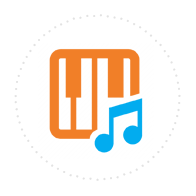Musika Quick Stats
24 Years
Since We Started
41,456+
Happy Customers
10,769
Cities with Students
3,123
Teachers in Network
Lesson Special - Up to 20% OFF! Get Started Now with a Risk-Free Trial!
Here are just a few of the many teachers offering Guitar lessons in Sunnyvale . Whether you are looking for beginner guitar lessons for your kids, or are an adult wanting to improve your skills, the instructors in our network are ready to help you now!
Instruments: Guitar
Brent Black (CriticalJazz.com) Hristo boldly departs from the group setting and gives the audience even more of what they crave - soulful arrangements and virtuosity with heart. There is a beauty and an elegance that comes through on each and every one of Hristo Vitchev's recordings. The music he composes, the arrangements he crafts, the musicians that he assembles together and the dignity and reverence of his musicianship speak of the heart of the man and his love of life. Read More
Instruments: Guitar Bass Guitar Electric Guitar Classical Guitar Acoustic Guitar
When I first meet a student I ask them to tell me what kinds of music they love to listen to and what strikes a chord in them about this particular music. Then I assess their level, if they have played for awhile. If they are a beginner, I start with correct posture, hand position, and elbow position as these are very important ergonomic considerations any of which can cause stress on the joints and additional tension in both the hands and wrists. Read More
Instruments: Guitar Bass Guitar Double Bass
I have worked for many years teaching, counseling and assisting students with their love and joy of music. During my teaching career I have also helped students with conflict resolution, coping skills, issues with and surrounding pride and culture, college selection, application processes, financing and preparation for college. I have taught a very diverse group of students, which has allowed me to learn various approaches to communicating and working with students from all walks of life. Read More
Instruments: Guitar
I've been fascinated with the guitar since I was about 10 years old, having been influenced by all the great rock guitar gods of the sixties and seventies. As I got into high school I became interested in jazz, and started to study jazz guitar. I enjoy many styles of music. I like music that is very passionate and moves and grooves you in various ways. I'm very creative and innovative. Read More
Instruments: Guitar Synthesizer Electric Guitar Acoustic Guitar
I discuss with you what you want to achieve; playing your favorite songs, writing your own, improvising, playing with others, etc. and then we build a plan to develop the supporting skills to accomplish this goal. I focus on imparting clear instruction and advice, paying close attention to what is or isn't working for you to help you refine and improve your playing. Together we'll ensure you understand the fretboard up and down, filling in any gaps in knowledge and connecting all of the dots until you feel confident moving around it. Read More
Instruments: Piano Guitar Voice Violin Viola Ukulele Keyboard Electric Guitar Acoustic Guitar
Music has always been a part of my life. I became involved in music, theater and dance at a young age, performing in countless professional productions. In my teens and early adulthood, I began writing and recording music and became involved in a number of recording projects that led me to teaching. I gave my first lesson over a decade ago and I continue to perform when I can. I graduated from Interlochen Arts Academy with concentrations in Theater and Music, and I worked for Women's Audio Mission in San Francisco. Read More
Instruments: Guitar Bass Guitar Ukulele Double Bass
In my teaching style I ask students to explore specific aspects and material that they would like to learn. As I cater to this approach, I compliment it by incorporating fundamentals, theory and improvisation into my lessons. I am a competent teacher and enjoy teaching and continually learning through music. I also enjoy helping students with song writing, arranging and singing as their interest warrants. The lessons are usually guided by the interests of the student based on his or her goals. Read More
Instruments: Trumpet
If you play more than one instrument, how did you decide to start playing the second? (Or 3rd, 4th, 5th, etc)!
In addition to playing the trumpet, I also play ukulele. In my first year at Juilliard, I had a hard time improving at Ear Training. Taking up a chordal instrument like the ukulele allowed me to hear music in a completely different way and advance my ear training skills much more quickly. I think it's very important if you play a single line instrument to learn a chordal instrument; whether it's harp, piano, ukulele, guitar etc. After getting better at ukulele, I formed a band with a colleague from school. Now, I write songs for my band and have a lot of fun playing and performing a different genre of music!
When did you decide to become a professional musician? Was it a gradual decision or was there a defining moment for you?
I have enjoyed playing music since I was very young. When I got to high school, I started taking music seriously and ended up attending the summer music camp at Interlochen Arts Academy. At Interlochen, I gained some of my first experience playing in orchestra which quickly became one of my biggest passions. Near the end of camp, we performed Mahler’s second symphony. I was captivated by this piece, and from the first rehearsal, I decided that I wanted to play and perform music for the rest of my life.
What does a normal practice session look like for you?
A normal practice session for me starts off with about ten minutes of long tones and breathing exercises, resting as much as I play and going very slowly (38 beats per minute). After this, I work out of the Stamp book to play pedal tones and slur up above the staff. Then, I work on technical exercises, which include intervallic slurs, multiple tonguing, articulation and other things from Bai Lin, Shuebruk, Arbans, Flexus or Franquin. I write down everything that I do and how it went. I typically work on a single exercise for about a week and then move on to the next one. After I get my warm up and technical exercises out of the way and take a break, I work on the music that I have to play for any upcoming auditions or performances. It's important to me to start the day off as relaxed as possible, making sure that all of the technical aspects of my playing are in the proper place before I move on to my music. It makes playing difficult music much easier!
What advice do you have about practicing effectively?
Since the trumpet has a max practice time of around two or three hours, it is incredibly important that students use their time effectively. We can't spend two or three hours on a single passage of music like a violinist or pianist, so every note we play should have our complete attention. Trumpet players must also not overplay anything, as it's very easy to sustain a injury or to lose that mental focus. Resting as much as we play and breaking up practice sessions into thirty-minute blocks is a very effective strategy to working around these issues.
When will I start to see results?
Results can vary student to student. For example, a student working on articulation will see results much faster, a few days to a week, than a student working on an embouchure change, which could take anywhere from month to a year. However, since my lesson plans involve writing everything down (what the exercise or etude the student is working on, what is good and bad about it, time spent on material, what to improve, etc.) students should be able to easily document their progress day by day. When starting out with lessons, it’s typical to see a great deal of improvement in a short amount of time.
24 Years
Since We Started
41,456+
Happy Customers
10,769
Cities with Students
3,123
Teachers in Network
Trusted as the industry leader, for over 21 years the teachers in our network have been providing Guitar lessons in Sunnyvale to students of all ages and abilities.
We'll then reach out to the teachers for you.
Schedule the risk-free trial lesson directly with the teacher.
Continue with that teacher or try someone else.







